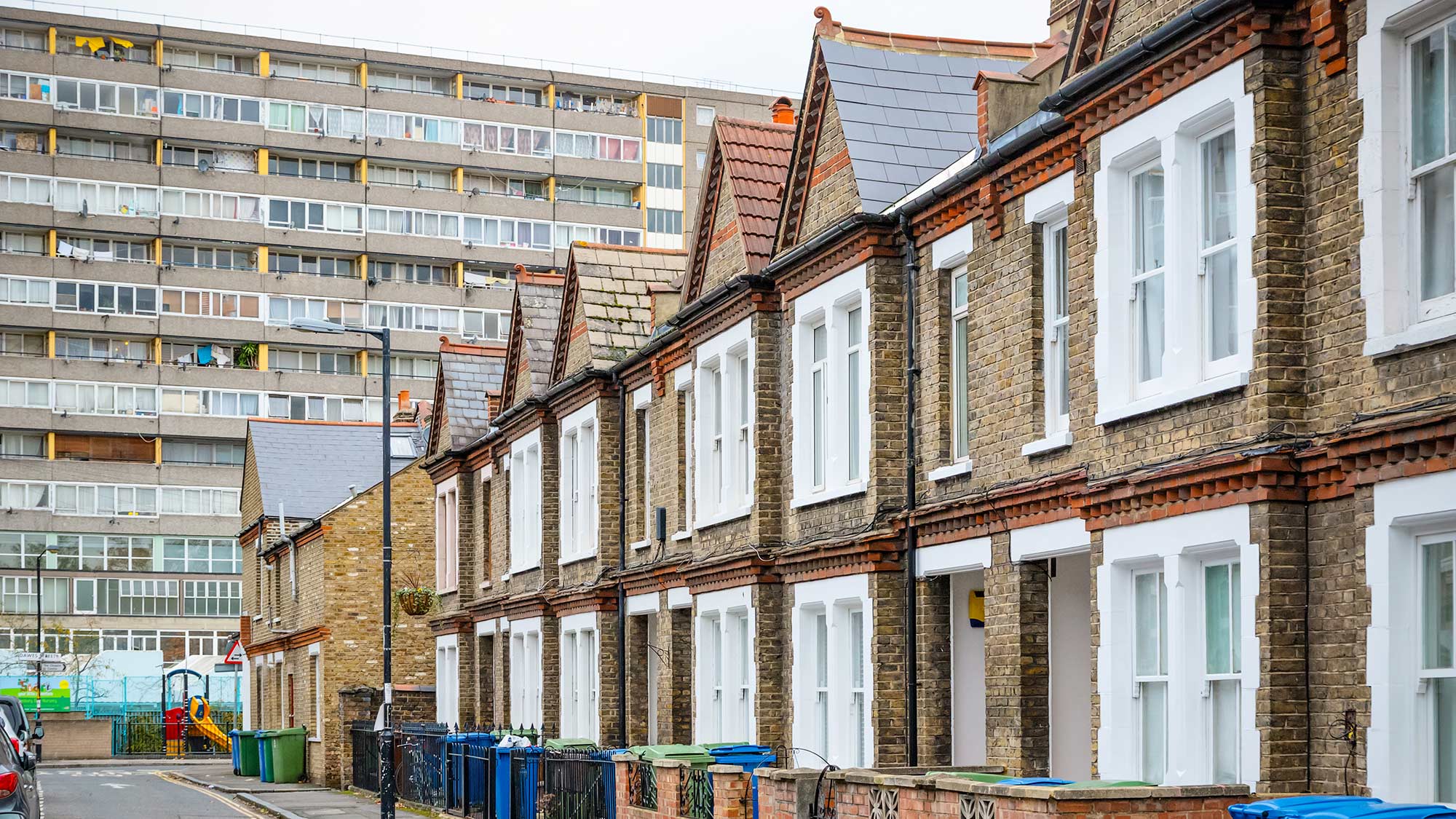Beyond carbon
While much of the focus in retrofitting homes has been around cutting energy bills and reducing carbon emissions, the wider societal benefits haven’t received nearly as much attention. The growing clamour to address emissions that originate in the home, from gas boilers, lack of insulation and other factors, provides us with a valuable parallel opportunity to tackle a range of related issues.
Health is a key priority, particularly for those on lower incomes or in densely populated urban settings. Cleaner air and comfortable temperatures are obvious goals, and recent research shows that retrofitting can produce related benefits for mental health.
Using cost-benefit analysis shows that taking action to improve homes could not just help thousands of residents avoid the damaging effects of mental health issues in their everyday lives and work, it can also stimulate the local economy and construction sector and generate new jobs.
Societal benefits of improving housing stock
Part of the hesitancy about making the significant investment required for retrofitting homes is that it has been difficult to quantify the full range of benefits. However, a recent piece of work by Arup explores ways to estimate and monetise the wider benefits of retrofitting social housing through an economic model that highlights the impact of increased mental health issues. Our team conducted an economic appraisal and analysis for the retrofitting of 54,000 social-rented homes in Leeds, comprising a mixture of flats and houses.
The aim was to establish the scale of potential benefits of neighbourhood/city scale decarbonisation and to highlight the importance of the wider social, economic and environmental benefits beyond the core emission reduction and energy cost savings. What we learned from this work revealed a considerable socio-economic lever for national policy makers and regional authorities alike.
Sustainable means healthy
At the core of our work was the fact that low quality housing, with ineffective heating and poor air quality doesn’t just lead to CO2 emissions and costly, unsustainable use of fossil fuels. Excess cold in homes also leads to residents experiencing depression and anxiety.
The idea that your home is leaking heat and money, and isn’t comfortable to reside in, leads inevitably to raised stress levels – particular for older residents or families on low incomes. Recent relevant research from Amy Clair et Emma Baker (2023) ‘Cold homes and mental health harm: Evidence from the UK Household longitudinal Study’, supports this conclusion with empirical evidence.
For policy makers the goal is to understand the scale of the problem, the cost and scale of relevant solutions and to understand implementation. In Leeds, the preferred option of retrofitting social-rented homes would bring all properties to a minimum of EPC rating C, which is assumed to prevent excess cold in all properties.
Working with resources from the Greater Manchester Combined Authority (GMCA) Research team, we were then able to establish the true value of retrofitting versus the cost to the NHS of treating adults suffering from anxiety and depression, and the cost to the economy through lost output.
Beyond health benefits and CO2 reductions, retrofitting at scale is a major stimulus for any local construction sector and will generate employment during construction phases. Direct project spending can subsequently generate wider benefits to the economy from supply chain and then wider household-to-business spending. It was estimated that during an eight-year construction period there would be approximately 1,600 additional construction workers required per year to retrofit the 54,000 homes.
Of course as many regions of the country commit to retrofit-at-scale programmes, existing issues around the supply of skilled labour may intensify. In July 2023, the UK government decided to ease visa restrictions for non-UK construction workers an expansion of the local workforce will likely also have to play a role.
Assessing the wider benefits
A cost-benefit analysis of retrofit that is only based on energy costs, carbon emissions and air quality improvements, without considering the wider benefits, seems to result in poor value for money. However, when the wider benefits are assessed and included, the benefit-cost ratio moves from 1.35 (without wider benefits) to 2.15 (with wider benefits) when considering distributional and health benefits of targeting retrofitting works at social housing. Whilst the monetary value of the health and distributional benefits is smaller than traditional metrics of energy cost savings and carbon, they are still significant in magnitude
In our report we estimated the wider, social ‘distributional’ benefits by applying the HM Treasury’s Green Book weighting methodology. This allowed us to take into account differences in wealth among the residents affected, which is important given that cash benefits from energy savings are far more important to households with lower incomes.
The case for retrofit expands
There are many other retrofit benefits to assess and explore. While our study primarily looks at the avoided health impacts from cold homes, further work could assess the health benefits of reduced overheating. For example, during summer 2022, there were an estimated 2,985 (2,258 to 3,712) all-cause excess deaths associated with five heat episodes.
In addition, internal air-quality retrofit improvements will lead to further respiratory health benefits which are not calculated here – for example from avoided mould or the build-up of internal pollutants. Additional benefits could also take in the possibility of reduced spending on social care too, but those calculations have not yet been made.
Retrofit – a truly holistic intervention
As you explore what retrofitting might achieve, you soon find yourself building a complex and nuanced picture of what housing means, for individuals and communities in all their variation and diversity. For governments at all levels, retrofitting at scale programmes, if grounded in local need and priorities, offer a powerful mechanism to tackle many different issues at once. In this context there is also great potential to attract outcome-seeking capital, for example through a blended finance, place-based investment model.
To discuss how this research based approach might be of value to your community, talk to our retrofit at scale team, Becci Taylor, Michele Pittini or email [email protected]
 ;
;
